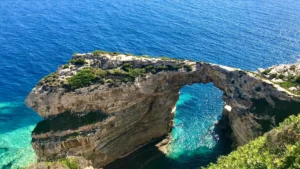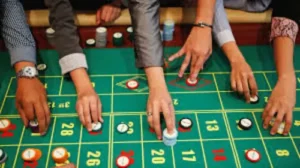Demography & Geography
Located at one of the crossroads of the world, Singapore’s strategic position has helped it grow into a major centre for trade, communications and tourism. Its geographical location is 136.8 km north of the equator, between longitudes 103 degrees 38′ E and 104 degrees 06′ E.
It is linked to Malaysia by two causeway bridges, and the key islands of the Riau archipelago of Indonesia are just a quick ferry trip away. Thailand and the Philippines are a short plane journey away. Singapore, with an airport served by more than 69 airlines, is very much the gateway to Southeast Asia.
History
The earliest known mention of Singapore was a 3rd century Chinese account which described Singapore as “Pu-luo-chung” (“island at the end of a peninsula”). Little is known about the island’s history at that time but this matter-of-fact description belies Singapore’s colourful past.
By the 14th century, Singapore had become part of the mighty Sri Vijayan empire and was known as Temasek (“Sea Town”). Located at the natural meeting point of sea routes at the tip of the Malay Peninsula, Singapore had long known visits from a wide variety of sea craft, from Chinese junks, Indian vessels, Arab dhows and Portuguese battleships to Buginese schooners.
During the 11th century, this small but strategically-placed island had earned a new name – “Singa Pura” (“Lion City”). According to legend, a visiting Sri Vijayan prince saw an animal he mistook for a lion and Singapore’s modern day name was born.
The British provided the next notable chapter in the Singapore story. During the 18th century, they saw the need for a strategic “halfway house” to refit, feed and protect the fleet of their growing empire, as well as to forestall any advances by the Dutch in the region.
It was against this political backdrop that Sir Stamford Raffles established Singapore as a trading station. The policy of free trade attracted merchants from all over Asia and from as far afield as the US and the Middle East.
By 1824, just five years after the founding of modern Singapore, the population had grown from a mere 150 to 10,000.
In 1832, Singapore became the centre of government for the Straits Settlements of Penang, Malacca and Singapore. The opening of the Suez Canal in 1869 and the advent of telegraph and steamship increased Singapore’s importance as a centre for the expanding trade between East and West.
Singapore had been the site of military action in the 14th century when it became embroiled in the struggle for the Malay Peninsula between Siam (now Thailand), and the Java-based Majapahit Empire.
Five centuries later, it was again the scene of significant fighting during World War II. Singapore was considered an impregnable fortress, but the Japanese overran the island in 1942. After the war, Singapore became a Crown Colony. The growth of nationalism led to self-government in 1959 and on 9 August 1965, Singapore became an independent republic.
The Merlion
The Merlion was first designed as an emblem for the Singapore Tourist Promotion Board (STPB) in 1964? the lion head with a fish body resting on a crest of waves quickly became Singaporefs icon to the rest of the world.
Designed by Mr Fraser Brunner, a member of the souvenir committee and a curator of the Van Kleef Aquarium, the lion head represents the lion spotted by Prince Sang Nila Utama when he re-discovered Singapura in 11 AD, as recorded in the “Malay Annals”. The fish tail of the Merlion symbolises the ancient city of Temasek (meaning gseah in Javanese) by which Singapore was known before the Prince named it gSingapurah (meaning glionh (singa) gcityh (pura) in Sanskrit), and represents Singaporefs humble beginnings as a fishing village.
Measuring 8.6 metres high and weighing 70 tonnes, the Merlion statue was built from cement fondue by the late Singapore craftsman, Mr Lim Nang Seng. A second and smaller Merlion statue, measuring two metres high and weighing three tones, was also built by Mr Lim. The body was made of cement fondue, the skin from porcelain plates and eyes from small red teacups.
Its First Home
The Merlion and the Cub were originally located at the mouth of the Singapore River, across from the Elizabeth Walk, just 120 metres from their present location. Also called the Merlion Park, the area soon became a popular tourist attraction and took its place among the famous landmarks of great cities of the world. Mr Lee Kuan Yew, the then Prime Minister of Singapore, officiated the installation ceremony of the Merlion on 15 September 1972. A bronze plaque commemorated the auspicious occasion with the inscription, “The Merlion has been erected as a symbol to welcome all visitors to Singapore”.
Today, the Merlion attracts more than one million visitors a year who make the trip to the Merlion Park to photograph this world famous icon at her new home, at the adjacent to One Fullerton.







